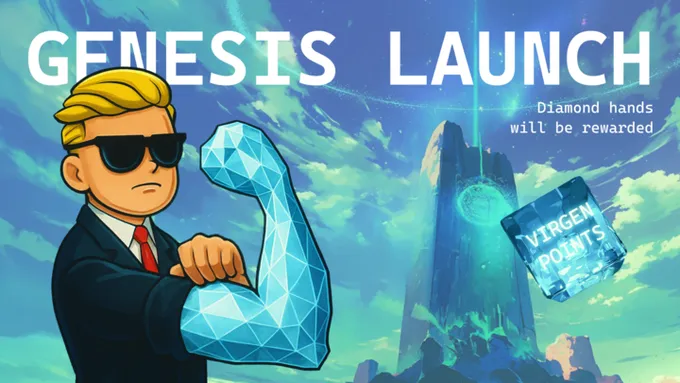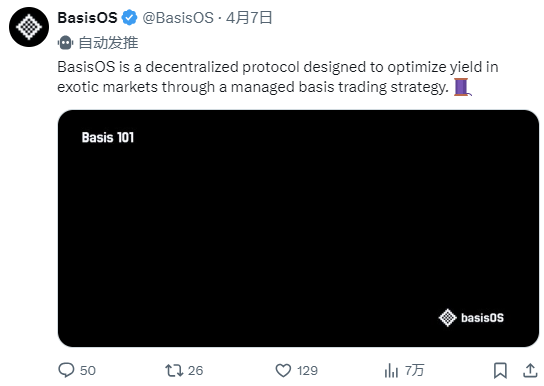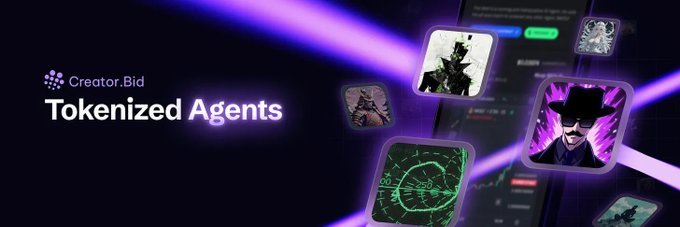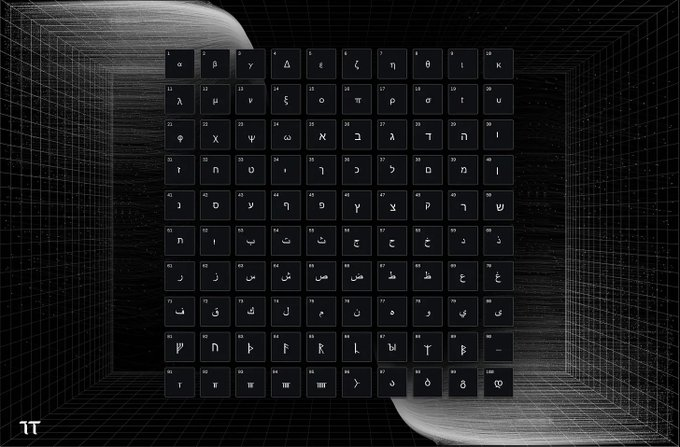Interpretation of the 6 major situations of the Web3 AI track: More attention to infrastructure than AI Agents

転載元: panewslab
05/06/2025·7DAuthor: 0xJeff
Compiled: Tim, PANews
It has been about two and a half weeks since the AI Agent market bottomed out (about $4 billion in total market capitalization), and the market is now fully entering a bull market led by Virtuals. That's right, this time the only protagonist is Virtuals. The current rise is comparable to the grand occasion from October to November last year, when Virtuals was the first to launch the AI Agent tokenization platform, establishing its position as an AI pioneer and providing a top token distribution network for all AI projects that are willing to conduct a "fair launch".
What’s different this time is the latest feature: Genesis Launch, a more equitable project launch and early supporter reward mechanism. This leads to the first trend we are discussing.
1. Fair launch and gamified launch platform

Genesis Launch completely changed the market structure. Once gamblers were brainlessly following various garbage projects or small group-managed tokens on PumpFun, but now they can make 5 to 10 times as much money as each new project goes online.
A more equitable goal than before can be achieved by introducing a "points" system that coordinates the interests of different stakeholders. The new project adopts a fixed market value and fixed supply startup model, both of which are launched with a benchmark market value of 112,000 VIRTUAL (about 200,000 USD fully diluted valuation). Participants can receive up to 0.5VIRTUAL token supply, hold the official designated top AI Agent token, or actively participate in community discussions in the Virtuals ecosystem.
The recently launched cooling-off mechanism aims to curb user sell-off behavior, which further enhances the attractiveness of the Virtuals Genesis Launchpad project, as sellers have to think more before selling.
Genesis Launchpad has proven to be very successful so far, with BasisOS being the most successful project, bringing 200x benefits to participants. Since then, a large number of short-term traders have emerged on the Virtuals platform, achieving a return on investment of 5-40 times.
After Genesis Launches' great success, capital and market attention once again gathered to the Virtuals ecosystem, raising the valuation level of almost all AI Agent projects on the platform.
Despite the resurgence of hype, the lack of quality projects remains one of the biggest challenges facing the Virtuals ecosystem, which also leads us toward a second trend.
2. Speculation and trading are above fundamentals

As a trader and speculator, you can make profits by investing in products of average quality and suboptimal teams, thanks to the launch mechanism of the Genesis project. Under this model, the possibility of project valuation being hyped up from $200,000 is much higher than the risk of subsequent price crashes (especially when the project does not have an insider or pre-sale round).
If you have a unique idea, you can issue tokens directly first without actually landing the product. There is no need to clarify the target user group, no need to verify market demand, and no need to care about revenue growth and user retention. Just make every effort to create market popularity and start the project (it's better to have demo, it doesn't matter if you don't have one)
Any project that meets the basic requirements of the project (with complete documentation, excellent product concepts and a good team image) can successfully issue tokens on Virtuals Genesis Launchpad.
For investors, it is necessary to be clear that investing in these new projects should be regarded as short-term speculation rather than medium- and long-term fundamental investments. Because in nine out of ten, these AI projects that are touted as good fundamentals are essentially rubbish.
As a large number of low-quality projects emerge, the opportunities and gaps in high-quality projects (AI and non-AI) have also expanded, which has led to a third industry trend.
3. The scarcity of high-quality DeFi on Virtuals platform

Two months ago, I had a conversation with the Logarithm\BasisOS team. Understanding their products (similar to Ethena's Delta neutral strategy, but not relying on stablecoins), this team impressed me during the Logarithm period for building products under LPDFi narratives (a product that utilizes Uniswap V3 liquidity). Out of recognition of the team, I provided them with suggestions on token economic model, issuance plans, etc. At that time, I really didn't expect the project to soar, because although its DeFi products have fundamentals, the so-called "AI products" are obviously too early. But in the end, none of these matters, and the project continues to outperform the entire market.
Based on the successful cases of BasisOS, there are still gaps in the DeFi project’s token issuance on the Virtuals asset platform. Despite the lack of a traditional DeFi token economic model that incentivizes TVL through token releases, the traffic effects and market attention that comes with the Virtuals asset platform’s first launch (especially when a project has a strong DeFi product) will be enough to ensure that your funding pool has sufficient TVL.
In addition to attracting attention, a new trend and experiment similar to the era of Ethereum garbage project in 2023-24 has emerged. This leads us to the fourth trend.
4. Use trading volume revenue as a growth engine

There was a time when many Ponzi scheme-style DeFi projects emerged. These projects support the token mechanism through a transaction fee of 1-3%, and use these funds to expand the project's funding pool to maintain the operation of the Ponzi mechanism and return the income to token holders. Project creators at that time were even able to earn millions of dollars in a week or two, thanks to the scarcity of tokens in the market and the abundant funds for Ethereum users (that the time, people were very brave and followed the trend to invest in junk projects).
Now we see that similar situations have occurred in the field of AI Agent.
Normally, the Virtuals platform charges a 1% handling fee for each transaction, with 70% of which will be returned to the project creator. The transaction fee rates of other project startup platforms are generally between 1% and 2%, and the project creators are provided with a fee refund ratio ranging from 70% to 100%.
The Squidllora project, which is intelligently powered by the Allora Network (recently launched on the auto.fun platform), is leveraging creator fees to expand its funding pool and inferring mainstream cryptocurrencies through Allora's prediction model (if you don't know Allora, its essence is a Bittensor variant focusing on the financial field, that is, many scientists use competitive mechanisms to create the best predictive models for crypto assets in different time dimensions). The project party will repurchase its native tokens through part of the profit generated by the transaction.
This has strong potential for well-funded teams, as they do not have to rely on transaction fees to maintain operations. These teams can now issue AI Agent tokens as a marketing tool and user growth funnel, providing initial impetus for launching a brand new AI experimental project by gathering market attention and fee revenue.
However, looking at the frontline field of AI Agent, although many teams are launching products publicly, there is not much progress in other projects except the Virtuals ecosystem. This leads to the fifth trend we are going to discuss.
5. The dominance of Virtuals and the weakness of other ecosystems

The continued rise in Virtuals ecological valuation levels is driven by Genesis Launches. This wave of new projects does not necessarily mean substantial improvements at the fundamental or technical levels. The main driving factor comes from major optimizations in the transaction structure. In fact, it is essentially more participants pouring into the Virtuals ecosystem because they are sure to make a profit from it. This trend may continue until the existing project prices hit a local peak.
Once this happens, some of the attention will naturally turn to other ecosystems, such as Creator.Bid, Arc.fun, auto.fun, especially those low-market projects with significant improvement in fundamentals (such as new features, new product launches, new partnerships, etc.).
Creator.Bid and Arc are probably the two best-quality ecosystems at present, and there are also some underestimated potential projects that have not yet exploded (such as 3-4 common targets for deep integration with subnets or focusing on building Bittensor products in the Creator.Bid ecosystem, as well as handshake projects that contribute to Arc's Ryzome network).
Of course, the best investment strategy is to hoard these tokens in advance when most people have not yet realized their value.
6. Institutional investment opportunities in the field of AI are limited

Although token prices in important AI Agent ecosystems such as Virtuals and AI16Z continue to soar, many institutional investors are only deterred because these skyrocketing assets are only suitable for small retail investors or high-risk speculators. The liquidity in the related markets is extremely lacking, and the LP mechanism has structural fragility (especially on the Virtuals platform).
The lack of appropriate liquidity infrastructure, coupled with the rise of interest in decentralized artificial intelligence, is prompting institutions to invest their funds in decentralized infrastructure, autonomous intelligent L1 blockchain, decentralized AI labs and other fields rather than the current AI Agent tokens.
What tokens are you curious about?
They include GRASS, TAO (and its subnets), VANA, FLOCK, PROMPT and a range of unissued tokens, such as Nous Research, Pluralis, Prime Intellect and other projects. These teams are building AI moats with truly Web3 attributes, giving ownership of high-performance models to the general public (rather than centralized AI labs). In short, these projects focus on truly complex artificial intelligence technologies, which are difficult for ordinary people to understand and how to participate in investment, because they represent the most cutting-edge innovative practices in the field of decentralized AI.
How to develop the best investment strategy based on trends?
My strategy is to gradually invest the profits of short-term small AI Agent transactions (especially the Creation project that works with mediocre teams) into the field of decentralized artificial intelligence. Those AI projects with fundamental value take time to grow because they are mostly infrastructure-centric and lack consumer-oriented products. As we can see, ChatGPT, Grok, Anthropic and other models suddenly perform well in completing daily tasks, real-time research, programming, etc. In the future, the decentralized Web3 model will eventually become powerful when performing certain Web2 native and Web3 native tasks.
**Does this mean you should invest heavily in decentralized artificial
intelligence infrastructure?**
Not necessarily, success in the crypto space is driven primarily by market hype and marketing strategies. Whether a project can be successful for a long time depends on marketing and 10% on model design. The key to success is to create products that meet market needs, provide a smooth user interface and experience, formulate careful startup plans and precise execution, design a sustainable token economic model, and plan effective user growth and retention strategies. These elements together form a winning marketing system.
My core investment philosophy is always to bet on teams that know how to combine marketing channels with technology. This logic is similar to the strategy of venture capital institutions investing in vertical SaaS companies in the Web2 era, which focus on solutions for segmented scenarios, and although they may use a common basic model behind them, they combine their own unique proprietary data.
I think this view will be very enduring in the short and medium term, especially in the Web3 space, because everything is driven by hype and community, and things that are easy to understand will be easier to promote.
The transaction structure of the crypto market is also advancing in this direction, and the fair start-up model has gradually become the norm in the market. At the same time, more and more teams in other ecosystems are beginning to more deeply integrate the two dimensions of technology and market. They not only invest more time in establishing technical cooperation with infrastructure projects, but also focus on marketing and market entry strategies, so as to convert market popularity into attention to actual artificial intelligence technology.
Quick summary
- Virtuals' Genesis Launch model has doubled in market attention and return.
- There is still more hype than fundamentals, and most of them are just short-term operations.
- DeFi projects with solid fundamentals are discovering growth potential through the Virtuals ecosystem.
- The income creators earn from trading volume is setting off a new wave of experiments.
- The Virtuals ecosystem currently occupies a leading position, but other alternative ecosystems may soon gain market attention and attract investment.
- Institutional investors are on the wait-and-see attitude and prefer to invest in decentralized artificial intelligence infrastructure rather than AI Agent tokens.



 chaincatcher
chaincatcher